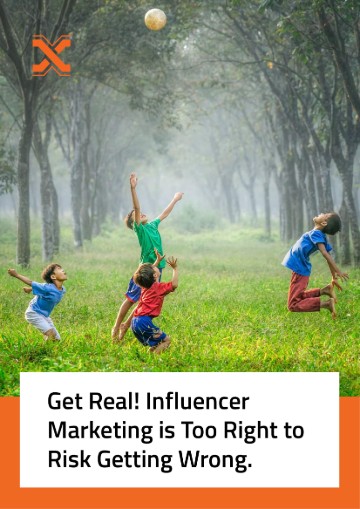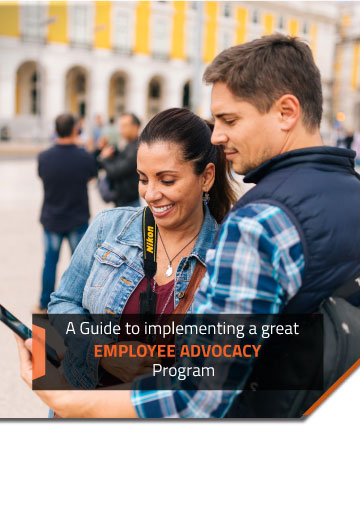
Most brands believe paid marketing is the main way forward when it comes to social media because of the saturation of content and users. In this article, we will debunk this theory and give you a blueprint for successful organic social media marketing.
Social media is no more just a platform for ‘socializing’ but a playground for businesses to promote their USPs and create brand awareness, attract and build an audience, engage prospective customers, and convert leads into revenue.
There are two ways of achieving this – organic social media marketing and paid social media marketing. In this article, we’ll extensively discuss organic marketing and how to achieve success on social media using organic marketing strategies. Here’s what we’ll cover:
- Understanding ‘Organic’ Marketing
- Organic Marketing vs Paid Marketing, Which One’s Better for Social Media?
- 4 Benefits of Organic Marketing on Social Media
- You Build a Genuine Audience
- It’s Cost Efficient
- Sustainable Source of Traffic
- Builds Brand Authority
- Organic Social Media Marketing Strategies
- Identify the Right Social Platforms (and Content Types) for Your Brand
- Cross-Post and Reuse Content
- Make it Easy for Customers to Find you on Social Media
- Follow the 80/20 Rule
- Hire Influencers
- Join Groups and Forums
- Leverage Live Conversations, Podcasts, and Webinars
- Promote Your People
- Measure, Analyze, and Optimize
- Challenges with Organic Social Media Marketing
- Using Paid Marketing with Organic Marketing
- Conclusion
Understanding ‘Organic’ Marketing
Digital marketing involves creating, publishing, and promoting marketing assets, like blogs, newsletters, reels, posts, videos, etc. Every brand expects these assets to garner engagement in the form of views, likes, shares, follows, etc., eventually leading to customer inquiries and revenue-generating conversions.
But for an audience to engage with a brand’s asset, the asset has to first ‘reach’ them. If the platform/algorithm where the asset is published does not highlight it to the potential audience, it isn’t easy to achieve
The need to drive more ‘reach’ (the total number of people who see the asset) fuels organic and paid marketing activities.

Organic social media marketing is a strategy where you don’t pay the social media platform to promote your marketing asset to an audience; rather, it happens naturally. The platform’s algorithm analyzes the content being put out and then shows it to people who are likely to enjoy or need it.
However, with paid social media marketing, you pay the platform to promote your marketing asset to a fixed and predefined audience (you pay to increase its reach).
Organic Marketing vs Paid Marketing: Which One’s Better for Social Media?
With organic marketing, no metric is guaranteed because it is up to the platform’s algorithm to decide how valuable your content is and to whom it is relevant. You can indicate what it’s about through the title, description, hashtags, and so on, but it is still up to the platform to decide. However, you can deduce what type of content works for your niche and what doesn’t as you continue to run organic marketing activities. Since you don’t have to shell out money to the platform with organic marketing, you can experiment with different types of content, themes, and strategies and gradually create a roadmap that works for your brand.
With paid marketing, you have some degree of control over results. For example, you can analyze the ‘Cost per 1,000 people reached’ (the average cost to reach 1,000 people) metric of past ads you’ve run on Instagram and use this to allocate the right budget for the reach you want to achieve for an upcoming post. That being said, paid marketing is costly, and there’s very little room for mistakes.
Another difference is that organic marketing takes time to show results. Organic activities need to be consistent in terms of frequency and quality. Paid marketing, on the other hand, will drive results immediately. It also levels the playing field between old brands that have already built an audience and newer ones with little digital presence. However, the results driven by organic traffic are more genuine and valuable. They are also consistent. With paid marketing, the results stop when the budget is depleted. This makes organic marketing more beneficial in the long run.
In both forms of marketing, you cannot control customer enquiries or conversions. You can only promote your marketing content and attract people, so it’s up to them whether they submit information.
So is one better than the other? Well, not exactly, since they both work towards increasing the visibility of your marketing asset. However, organic results (driven by organic marketing) are free and sustainable. Content delivered organically also seems to be favored by people, as a survey showed that people considered organic search results on Google to be 60% more relevant than ad results.
That is why the most prudent strategy is to work on organic marketing while using paid marketing to supplement results until organic results kick in. The end goal is to create sustainable organic traffic (on whichever platform you choose), so there are continuous, long-lasting results.

4 Benefits of Organic Marketing on Social Media
60% of businesses increased their organic marketing budgets in 2022, according to a survey by Search Engine Journal. It’s evident that brands are betting on organic marketing as a strategy for growth, and here are 4 benefits you can reap from organic social media marketing as well:
1. You Build a Genuine Audience
With paid marketing, any person that matches the ad’s targeting criteria is shown the promoted post. This means that a person who isn’t interested in the content could also be shown the post.
The chance of reaching an irrelevant audience drops drastically with organic marketing since the platform’s algorithm is doing the targeting. Social media algorithms are built to show the right content to the right person.
This means that the people your posts, reels, videos, and other assets are being shown to organically are extremely likely to find them interesting and engage with them. You also build a loyal audience base (through follows, subscribes, and so on) faster with organic marketing for the same reason.
What’s important is that these followers are authentic. They could have skipped past your post, but they chose to engage. In the future, when you post similar content, you can be sure they will engage again, driving organic traffic. Most importantly, followers who convert into customers are likely to become repeat buyers.
2. It’s Cost Efficient
With organic marketing, your expenditure is limited to resources- employees, artwork, editing software, etc. These elements are also used when creating assets for paid marketing, but there’s the additional cost you have to shell out for running paid promotions. This is quite a big number for most brands and something you save when running organic marketing campaigns.
This allows you to acquire prospects and customers for a smaller budget and lowers the acquisition cost, resulting in better ROI for your marketing efforts. The only caveat is that organic marketing takes time to deliver good enough results.
3. Sustainable Source of Traffic
Once you build an authentic and loyal audience, they will engage even with content that you publish in the future. This results in steady and consistent engagement (in terms of views, likes, comments, and so on) for every asset you publish.
Social media platforms love content that is getting attention; it’s an indicator of virality and helps them retain users. When your current audience engages with your posts organically, it fuels the algorithm to promote them to more people, even non-followers. This, in turn, drives organic visibility at no extra cost.
4. Builds Brand Authority
Consistent organic marketing creates consistent touchpoints with your audience. If you post a reel on social media daily, your audience will be reminded of your brand daily. This gradually creates a sense of trust among people within your audience base.
Regular organic marketing also increases engagement. When a post with a lot of likes and comments reaches a new person on the platform, they are quick to trust your brand (because it has social proof created via likes and comments). Eventually, trust leads to loyalty and revenue. A report by Invesp stated that Close to 60% of consumers buy from brands they trust as opposed to newer brands they don’t know.
Organic Social Media Marketing Strategies
Without the right strategy, organic marketing can quickly become overwhelming. The sheer number of platforms and content formats alone will unnerve marketers. You can navigate your way successfully by creating a well-defined strategy in advance, and here are 9 ways to go about doing just that:
1. Identify the Right Social Platforms for Your Brand
Something a lot of brands do today is to target every single social media platform. The more, the better, right? Well, not always. Each forum has its niche audience and a content genre that suits it. Not every platform and content tone needs to suit your brand.
LinkedIn, for example, is a more formal platform with a professional crowd that shares content related to professions, jobs, hiring, etc. A brand that sells custom-made curtains will not get much traction on LinkedIn because its content is more fun and entertaining and targeted to a crowd looking for casual content. On the other hand, an IT company with enterprise software will get more traction on LinkedIn than on platforms like Facebook.
While you can target all platforms, it’s smarter to first put maximum effort into platforms that suit your content. Similarly, you also have to choose content that will work for you. Instagram allows different forms of content – posts, reels, live streams, etc. Each piece of content takes time, effort and money to create, so you want to ensure you are directing your energy on the right content.
2. Cross-Post and Reuse Content
You don’t need to wait for SEO to drive traffic to a blog; you can also promote it on social media as a post, during a podcast, or in a webinar. There are many ways to reuse content between platforms and get more organic results with minimal extra effort.
For example, you can cut a posted YouTube video into a shorter clip (of less than 60 seconds) from right within the YouTube app and post it as ‘Shorts’. It just takes ten minutes to create a short from an existing video, and shorts generally drive more views. In fact, YouTube Shorts receives nearly 15 billion views daily! You can tap into this audience without needing any extra effort, just ten minutes of your time and a smartphone.
The decision to cross-post has to be taken before creating content. This will help you use every asset optimally. The right way to do this is to create a long-term content calendar beforehand. For each piece of content on your calendar, create a web of different ways to use it.
3. Make it Easy for Customers to Find you on Social Media
This one seems like a no-brainer, but many brands unknowingly make it harder for their audience to find them by using a complicated handle name or using different handle names on different platforms.
Organic marketing involves your audience finding you naturally; for that to happen, your audience should be able to find you easily on social media. Using your brand name as is (or with a small variation if it isn’t available) for the handle and using the same handle across platforms is best.
Also, make sure to link platforms to each other and list all social handles on the website. This will help you drive traffic from one channel to another and keep your audience focused on your brand for longer.
4. Follow the 80/20 Rule
The 80/20 rule is quite simple – 80% of your content should be for your audience, and 20% should be for your brand. That means 80% of your content should be tailored to give the audience what they want, even if it doesn’t aid in conversions (its purpose is to drive engagement). So you should post entertaining, informative, creative content, and so on.
The rest 20% can be promotional content, where you promote your brand, products, services, offers, and so on. This principle has an incredible effect on increasing and retaining an audience while driving your business goals of conversions on social media.
5. Hire Influencers
Paid marketing is not the only way to supplement traffic until your organic strategies show results. Through influencer marketing, you can also piggyback on the success of other brands/individuals on social media. What is influencer marketing? Quite simply, it is having a person (or brand) with a huge number of followers promote your brand on their channel. Your brand gets visibility across a large network of people.
While influencer marketing seems like a paid strategy – you have to pay the influencer for their service, it is an organic strategy because you pay the influencer for a job – to promote your brand and not for the actual reach. That still happens organically. It’s not different from paying a content writer or a graphics designer for marketing assets.
Influencer marketing is incredibly useful for newer brands that have a small following. With this strategy, you can get the speed of paid marketing and the authenticity of organic marketing.
6. Join Groups and Forums
Social media is a community; just like the real world, a community only thrives when people follow the principle of give and take. People engage with your content when they enjoy it, and you must engage with the content you want. An easy and impactful way of doing this is by joining groups and forums. Platforms like Facebook and LinkedIn have groups for different topics and niches, and people use them to get information and also to promote their content. Other platforms like Quora have built a forum for questions and answers.
Join these groups and forums, and become an active participant. Remember the 80/20 rule, don’t just promote your brand, but give back to the community by answering, suggesting, advising, and so on. This is a powerful way of establishing authority in your niche, which will later help you convert prospects.
7. Leverage Live Conversations, Podcasts, and Webinars
People enjoy podcasts because they can watch them when they’re free and listen to them on the go. They are entertained as well as educated. There are over 383 million podcast listeners globally as of November 2022. Podcasts as a format of content have gained popularity quite rapidly over the last few years.
You must include this format in your organic social media strategy if your brand’s goal is to build a thriving social media presence. There are different ways of going about this. You can start a live stream and have conversations. They can be recorded and posted as a video podcast or audio podcast on platforms like Spotify and then shared across social media. If the content is educational and informative, it can be released as a webinar with different chapters or episodes.
8. Promote Your People
A powerful way of building trust is by showing your company’s work culture and the people who work in it. It humanizes the brand and puts people at the forefront, invoking a sense of trust within your audience. Publish content related to the office, employees, events, etc. You can announce when a new member joins the company, post pictures of a team lunch, etc.
You can also get employees to participate and contribute through pictures, videos, and blogs, created and promoted by them, leveraging Employee Advocacy. This will expose your brand to a much wider network, speed up organic growth, and make your employees a stakeholder in the development of the company at the same time. It would be best if you considered using an employee advocacy platform, Socxo, to ensure that you have control over brand messaging. Socxo allows you to create bite-sized content and share it with your team so they can share relevant content and news on their channels. It also enables you to track the results of these activities, so you know how much organic growth the brand experiences through employee advocacy programs.
9. Measure, Analyze, and Optimize
While you don’t pay a dime to platforms for organic reach, it is by no means free. A lot of time, effort and money goes into creating strategies, graphics, videos, content, etc., and you will expect a positive ROI on this expenditure. The right way to ensure you are reaping the rewards of organic marketing is by diligently tracking data, measuring and analyzing metrics, and optimizing organic activities based on this analysis.
Every platform has its analytics system, which is quite robust and detailed. Metrics like reach, impressions, CTR, view time, etc., will give you an idea of how the platform’s algorithm and your audience treat your content. Use this data to learn what works and implement this into content that doesn’t seem to drive traffic.
Challenges with Organic Social Media Marketing
The number one challenge with organic marketing is the time it takes to yield results. Building a brand organically is similar to growing a startup; it’s a slow and gradual process. Social platforms tend to promote content that gets a lot of engagement. But when you start out and have no followers, you might not get a lot of engagement, stunting your reach and further stalling engagement. But gradually, as you get more followers and engagement, your posts will get more traction, and the results will kick in.
The second challenge is that organic marketing takes a lot of research, strategizing, and effort. With paid marketing, you can set a defined audience and target and know that your content will reach them. With organic marketing, you need to work for this reach. You have to see what is working for competitors, what is trending, what topics are sensitive, what time is good for posting, what changes have been made to the platform’s algorithm, and so on. It’s not something you can launch and expect results, like in paid ads. You have to be vigilant and consistent with your efforts.
Another challenge with organic marketing is that you cannot narrow down and focus on a target. With paid marketing, for example, you can target an ad based on age, gender, location, interests, intent, and so on. You, unfortunately, do not have this liberty with organic marketing. There are ways to indicate who your audience is with keywords, but it’s still up to the platform to decide.
Using Paid Marketing with Organic Marketing
The challenges with organic social media marketing can be diluted by using paid marketing strategies alongside organic strategies. In some cases, paid marketing can boost organic marketing efforts.
One way to use paid and organic marketing is by creating ads for specific objectives. If you aim to drive social media enquiries, you can run a lead generation on Facebook. The ad will drive enquiries while you continue to work on organic strategies, so your business can continue to generate revenue while also building an organic presence.
Another strategy is to use paid channels to boost content that grows organically later. For example, you can post a reel on Instagram and boost it through a paid ad, so it gets reach (and consequently, engagement) and followers. These followers will then generate organic engagement on future posts.
Conclusion
The key to a successful organic marketing strategy is quality and consistency. It’s easy to get discouraged, especially since results take time to show, but the longer you stick to them, the more beneficial they will be for your business.
You can run paid marketing campaigns simultaneously if your brand relies heavily on digital marketing for revenue. This will give you some breathing space to plan and curate an organic strategy that will be impactful, rather than just jumping in head first and winging it as you move forward. This combination will allow you to get the best of your marketing funds and efforts.



























